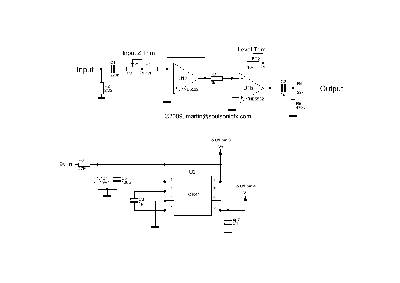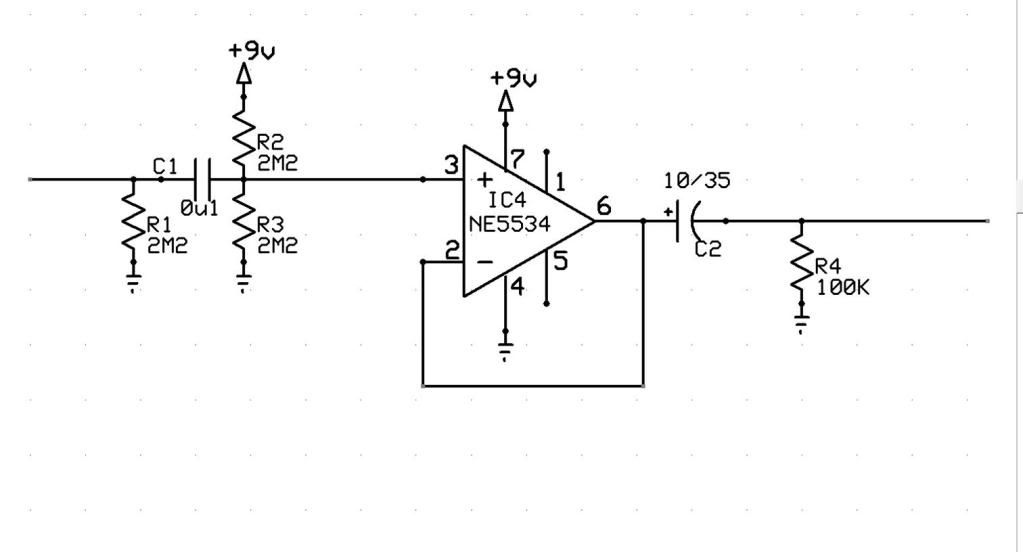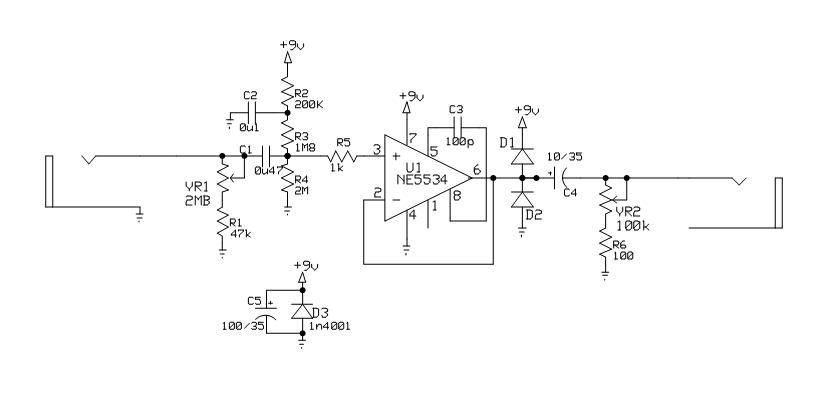Okay, I read through Björn's post again and I see that's how he said to connect it, but it still looks backwards to me from how I've see that sort of thing arranged.
Anyway, bipolar power for things like this are extremely simple and cheap to do with voltage inverter chips like the MAX1044. These chips take a positive voltage and use a capacitor charge pump circuit to make a negative voltage output. I use these all the time in several of my designs, and they are very handy and solve lots of problems. I've used the Microchip Tech. brand TC1044 chip in my Four Banger and they've proven to be very reliable - even in one unit which got damaged by incorrect power, the '1044 was still fine (my protection circuit helped, too).
Here is how I would do a simple buffer like this using a bipolar supply. When you use a bipolar supply, you don't need to make an artificial earth with a bias circuit.

- simple buffer
The 47 ohm resistor in tandem with the 9v Zener diode protects the 1044 from damage from over-voltage, reverse voltage, and static discharge. Basically, the resistor and zener form a basic voltage regulator; if the voltage goes over 9v, the zener turns on and starts pulling current through the resistor until the voltage drops to 9v.
I think that having a variable resistance in series with the input of an inverting opamp is the most efficient way to give a variable input impedance, so that's how I've done it here. The input cap is large enough that you should get a full range response even at low impedance settings. The 2M2 input pulldown can be omitted if the buffer is the first thing in the signal chain.
Since I want the buffer to keep the same polarity as the input, I included a second inverting stage to flip the polarity back to what it was originally; this also gives us the opportunity to give a little extra gain to make up for any losses from the first stage and also allow for a little extra boost if wanted.
Using a 470k pulldown on the output means I can easily get away with using a 1uF output cap and still get a full low-frequency range. Since it's 1uF, I can use a film cap instead of an electrolytic and have better fidelity because of this.
The 22k resistor in series with the output is a little bonus that can help the buffer to sound better and more "natural" if it precedes an old-style fuzz.
So, that's my take on the whole buffer thing. I hope it makes sense... just throwing some possible ideas out there.


